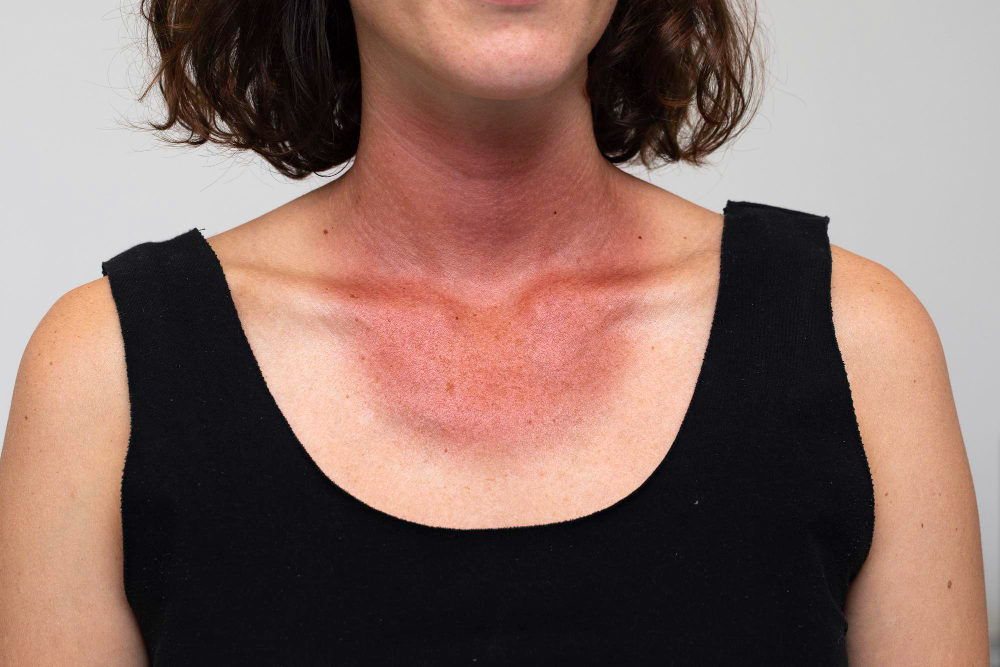What is Actinic Keratosis?
Actinic keratosis is a skin condition characterized by the appearance of rough, scaly patches on the skin that have been damaged by repeated exposure to the sun’s ultraviolet (UV) rays. These patches are usually red, pink, or skin-colored, and may be precancerous, meaning that they can develop into skin cancer if left untreated. Actinic keratosis is commonly found on sun-exposed areas of the skin, such as the face, neck, hands, and arms.

What are the causes of Actinic Keratosis?
Actinic keratosis is caused by damage to the skin from exposure to the sun’s ultraviolet (UV) rays. UV radiation from the sun can cause changes in the skin cells, leading to the development of rough, scaly patches. People who have had a lot of sun exposure over their lifetime, especially those who have fair skin, are at a higher risk of developing actinic keratosis. Additionally, factors such as advancing age, certain medical conditions, and taking certain medications can increase a person’s risk of developing this condition.
What are the symptoms of Actinic Keratosis?
Actinic keratosis typically presents as small, rough, scaly patches on the skin that are red, pink, or skin-colored. They are usually found on sun-exposed areas of the skin, such as the face, neck, arms, and hands. Other symptoms of actinic keratosis include:
- A dry, scaly texture to the affected skin
- A rough, gritty feeling when rubbing the skin
- A slightly raised or flat appearance
- A sore that does not heal
- A discolored area that is different from the surrounding skinIt’s important to note that not all actinic keratoses are visible or have symptoms. Some may be detected during a routine skin examination.
It’s important to note that not all actinic keratoses are visible or have symptoms. Some may be detected during a routine skin examination.
What treatments are available for Actinic Keratosis?
There are several treatment options available for actinic keratosis, including:
- Topical creams and gels: Medications applied directly to the skin can help to remove actinic keratoses. Some of these medications cause the skin to peel, while others are designed to destroy the abnormal cells.
- Cryotherapy: This involves freezing the affected skin with liquid nitrogen, causing the actinic keratosis to peel off.
- Surgical procedures: In more severe cases, actinic keratosis may be removed with a surgical procedure such as curettage (scraping) or electrodessication (burning).
- Light-based treatments: Photodynamic therapy (PDT) is a procedure that uses a photosensitizing medication and a special light source to destroy actinic keratosis cells.
- Systemic therapy: In rare cases, a doctor may prescribe oral medications to help treat actinic keratosis.
The choice of treatment will depend on several factors, including the size, number, and location of the actinic keratoses, as well as the overall health of the patient. A dermatologist or skin care professional can help to determine the best treatment plan for each individual case.
How to Help Prevent Actinic Keratosis?
There are several steps you can take to help prevent actinic keratosis:
- Protect your skin from the sun: Wear protective clothing, such as long-sleeved shirts and pants, and a wide-brimmed hat. Use a broad-spectrum, water-resistant sunscreen with a Sun Protection Factor (SPF) of 30 or higher and reapply it every two hours, especially after swimming or sweating.
- Seek shade: Avoid spending too much time in direct sunlight, especially during the peak hours of 10 am to 4 pm, when the sun’s rays are the strongest.
- Avoid tanning beds: Tanning beds emit UV radiation that can damage your skin and increase your risk of actinic keratosis and skin cancer.
- Get regular skin exams: Early detection and treatment of actinic keratosis can help to prevent the development of skin cancer. It’s important to have regular skin exams by a dermatologist or skin care professional.
By following these preventive measures, you can reduce your risk of developing actinic keratosis and protect your skin from further damage.


